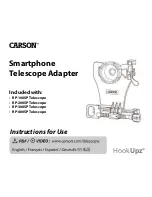
9.6 SMS Message Structure
The message structure of SMS will comply with GSM 03.40 v7.4.0 Digital cellular
telecommunications system (Phase 2+); Technical realization of the Short Message
Service (SMS) ETSI 2000.
Motorola's implementation uses the concatenation feature specified in sections
9.2.3.24.1 and 9.2.3.24.8 of the GSM 03.40 standard for messages that the Java ap-
plication sends that are too long to fit in a single SMS protocol message.
This implementation automatically concatenates the received SMS protocol messages
and passes the fully reassembled message to the application via the API. The imple-
mentation will support at least three SMS messages to be received and concatenated
together. Also, for sending, support for a minimum of three messages is supported.
Motorola advises that developers should not send messages that will take up more
than three SMS protocol messages unless the recipient's device is known to support
more.
9.7 SMS Notification
Examples of SMS interaction with a MIDlet would be the following:
•
A MIDlet will handle an incoming SMS message if the MIDlet is
registered to receive messages on the port (identifier) and is running.
•
When a MIDlet is paused and is registered to receive messages on the
port number of the incoming message, then the user will be queried to
launch the MIDlet.
•
If the MIDlet is not running and the Java Virtual Machine is not
initialized, then a Push Registry will be used to initialize the Virtual
Machine and launch the Java ME MIDlet. This only applies to trusted,
signed MIDlets.
•
If a message is received and the untrusted unsigned application and the
KVM are not running then the message will be discarded.
•
There is a SMS Access setting in the Java Settings menu option on the
handset that allows the user to specify when and how often to ask for
authorization. Before the connection is made from the MIDlet, the
options available are:
Java ME Developer Guide
Chapter 9 - JSR-120 - Wireless Messaging API
[67/201]
DRAFT - Subject to Change
















































